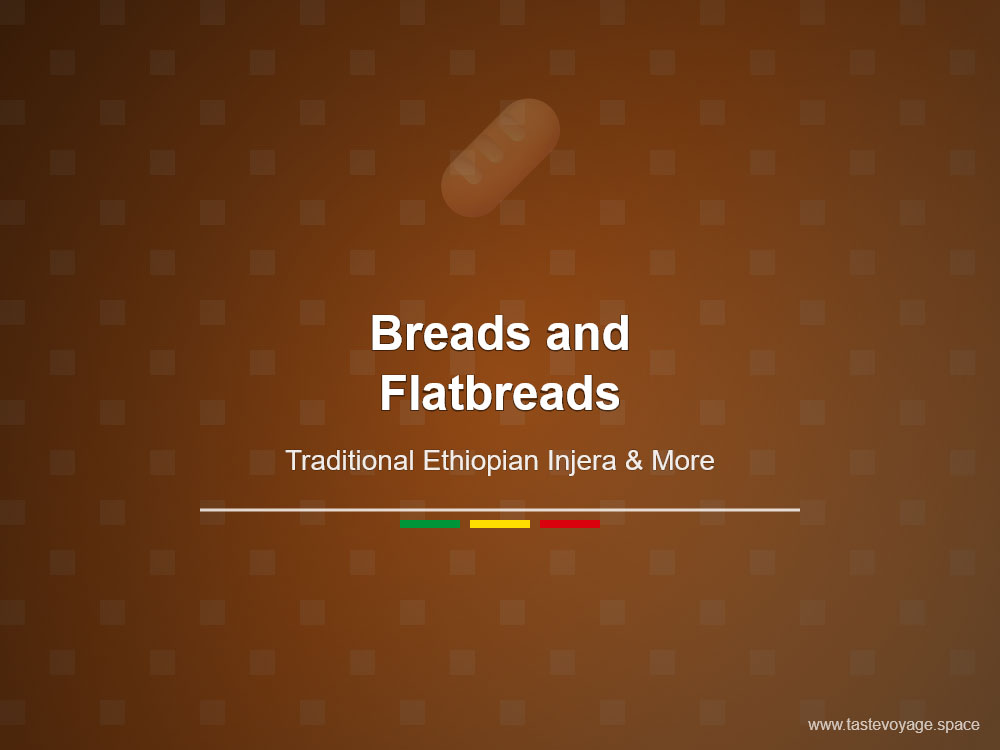Authentic Ethiopian Injera Recipe with Teff Flour
Travel the World Through Food >> Breads and Flatbreads>>Ethiopian Cuisine>> Authentic Ethiopian Injera Recipe with Teff Flour
Authentic Ethiopian Injera Recipe with Teff Flour
Discovering the Rich Tradition of Injera Bread in Ethiopian Cuisine
Injera bread is more than just a staple in Ethiopian households; it is a symbol of tradition, community, and culinary artistry. This unique flatbread has been enjoyed for centuries, serving as both a primary dish and a vital cultural expression. Known for its spongy texture and tangy flavor, injera embodies the rich food heritage of Ethiopia and the surrounding regions.
The Cultural Significance of Injera in Ethiopian Society
Injera holds a special place in Ethiopian culture. It is traditionally shared among family and friends during meals, fostering a sense of togetherness and hospitality. During communal gatherings, injera is laid out as a base on which various stews, vegetables, and meats are served. This practice reflects the importance of community and sharing in Ethiopian life.
Beyond its role at the dining table, injera also plays a part in various cultural ceremonies. It is often present during celebrations, religious festivals, and important life events. Its presence signifies unity and the continuity of age-old traditions passed down through generations.
The Culinary Significance of Teff Flour in Injera
The key ingredient that sets injera apart is teff flour, derived from teff grains—tiny, nutritious seeds native to Ethiopia. Teff is celebrated for its high nutritional value, including rich iron, calcium, and dietary fiber content. Its natural fermentation process gives injera its distinctive tang and airy texture.
Teff flour’s role in making injera highlights Ethiopia’s deep connection to locally sourced, traditional ingredients. The use of teff is not just a culinary choice but a reflection of the land’s agricultural heritage and the importance of indigenous grains in sustaining local diets.
The Art and Craft of Making Injera
Crafting authentic injera is an art form that requires both patience and skill. The batter, made from teff flour and water, undergoes fermentation over several days, developing its characteristic sourness and bubbles. The batter is then poured onto a hot griddle to cook, resulting in a soft, elastic bread with a slightly tangy taste.
This process exemplifies the harmony between nature and culinary tradition. Every batch of injera is a testament to the time-honored techniques that preserve Ethiopia’s culinary identity. The result is a versatile bread that can be used to scoop up an array of flavorful dishes, making it an essential component of Ethiopian meals.
Celebrating the Unique Flavor and Texture of Injera
Injera’s unique texture makes it a standout in the world of flatbreads. Its spongy surface is perfect for absorbing rich sauces and stews, enhancing the overall dining experience. The tangy flavor, brought about by natural fermentation, adds depth to the dishes enjoyed with injera.
This bread’s versatility extends beyond its flavor. It serves as a utensil, a plate, and a symbol of Ethiopian hospitality. Every bite offers a glimpse into a culinary tradition that emphasizes community, simplicity, and a deep reverence for locally sourced ingredients.
Embracing the Heritage of Injera Bread
Exploring injera offers a window into Ethiopia’s vibrant food culture. Its history, ingredients, and Traditional Preparation methods are a celebration of a rich and resilient culinary legacy. Whether served during special occasions or everyday meals, injera continues to connect communities and preserve the culinary identity of Ethiopia.
By appreciating the cultural and culinary significance of injera bread, we embrace the beauty of traditional foods that have stood the test of time. This extraordinary bread invites us to celebrate the art of slow, meaningful cooking and the enduring bonds forged around a shared table.
Experience the cultural richness and culinary significance of injera bread—a treasured Ethiopian tradition that continues to delight and inspire.
